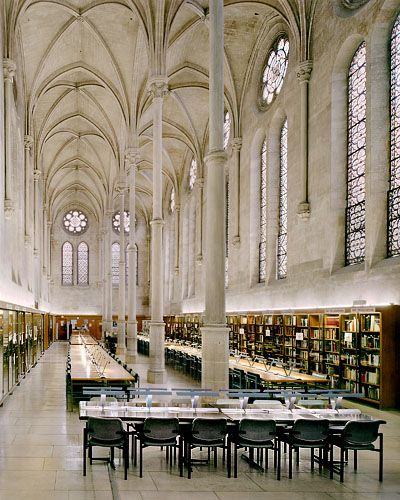Home › Forums › Coffee Break › Harp in Chamber Music / Quintette Instrumental de Paris
Tagged: chamber music, france, french music, Harp, marcel grandjany, pierre jamet
- This topic has 6 replies, 5 voices, and was last updated 5 years, 8 months ago by
Saul Davis Zlatkovski.
-
AuthorPosts
-
March 12, 2019 at 6:15 pm #225608
nowakadrian94
ParticipantDearest Harpists and Harp lovers!
I’m not really sure if the topic I would like to touch matches the coffee break – but I often read books in that very break, so I’m counting on my choosing well. (In case, please move it to another category).
The topic that I would like to talk about is the great world of the harp in chamber music. I am looking for the largest possible amount of informations, books, scientific works (undergraduate, graduate, doctoral) and articles on French chamber music in the first half of the 20th century. I am focused on a particular combination of instruments – flute, harp and string trio.
Going further – I am also looking for informations on the famous Quintette Instrumental de Paris and any materials recording their history or any cooperation with composers. (And also Marcel Grandjany and Pierre Jamet – as the harpist of the ensebmle).I do realize that most of the materials can be in French. Unfortunately – I live in a country where access to any books describing any history about the harp is practically impossible. For a very long time I have been looking in catalogs and collections of various libraries, but it’s hard to find something without knowing specific titles or authors.
Currently, I am writing a master’s thesis that focuses on this topic. I would also like to develop this subject on further studies – because the harp in chamber music is very important to me and the enormity of the wonderful repertoire – unknown and underestimated – is waiting to be found and propagated on the stages.
Is anyone able to suggest something? Is anyone in possession of such books or knows one that would help me? Thank you in advance for any answer!
-
This topic was modified 6 years, 1 month ago by
nowakadrian94.
March 13, 2019 at 9:13 am #225627evolene_t
ParticipantHello Adrian,
Unfortunately I know next to nothing about that particular topic, although I am French.
My advice, however, knowing what it’s like to write a thesis : come to Paris to research the topic.
You should be able to ask for a grant or scholarship, depending on your country and your university. Look into uni partnership to find possibilities of exchanges.Le Magasin de la Harpe – Budin is a good place to start, as a shop they have a lot of books and might be able to give you pointers.
Lots of beautiful, public libraries (you might have to registrer to get a student pass) will have information you’re looking for.
The Bibliothèque Sainte Geneviève will have history books.

Whereas the Bibliothèque du Conservatoire de Paris will have more information on music, but you’ll find historical references.

Most of the source material will be in French, yes. But with google translate, and by building up a repertoire of key vocabulary words, you’ll get by, since French and English are quite close languages. (I’m assuming that you’ve studied the French language, otherwise I’m not sure why you would undertake such a thesis)
If you play your cards well, you might even be able to meet up with musicians that have played in such circles, or composed for them.
Good luck!
March 13, 2019 at 5:19 pm #225656carl-swanson
ParticipantAdrian- If the ensemble you are talking about( Quintette instrumental de Paris) is the one that Pierre Jamet was in, then I would suggest you start by contacting his daughter, Marie-Claire Jamet. She inherited all of that music and I’m sure still has it. She may also be able to point you to articles that have been written about the ensemble over the years.
I just did a little poking around on the internet and found this:
A la suite de sa première rencontre avec Claude Debussy, en 1917, Pierre Jamet développa l’exploration des possibilités sonores encore inconnues de la harpe, en suscitant la curiosité et l’intérêt de nombreux compositeurs : la ballade dans le goût irlandais pour harpe et orchestre composée pour lui par D.-E. Inghelbrecht est un exemple. La période 1912-1922 représente dix années de recherches personnelles, rencontres avec de nombreux artistes et compositeurs, concerts en solistes…
Le répertoire de musique de chambre avec harpe s’est élargit surtout à partir de la naissance du ” Quintette Instrumental de Paris ” en 1922. En effet, trouvant que les sonorités de la flûte, de l’alto et de la harpe, dans la Sonate de Debussy, étaient une réussite, René Leroy, à la suite d’un concert avec Pierre Grout et Marcel Grandjany, eut l’idée d’ajouter un violon et un violoncelle. Digne des illustres quatuors à cordes comme ceux d’Eugène Ysaye ou Lucien Capet qui eurent beaucoup de succès à la fin du siècle précédent, le ” Quintette Instrumental de Paris ” fut admiré pendant plus de 35 ans pour la richesse et la variété de ses timbres.
Il est composé à l’origine de René Bas au violon, Pierre Grout à l’alto, Roger Boulmé au violoncelle et Marcel Grandjany à la harpe. Ce dernier ne fit que quelques répétitions puis partit pour les Etats-Unis : il fut remplacé en 1924 par Pierre Jamet. La seconde guerre mondiale a coupé leur élan : entre les années 1940 et 1944, Roger Boulmé mort à la guerre fut remplacé par Marcel Frecheville, Pierre Grout par Etienne Ginot et René Leroy par Gaston Crunelle. Dès 1945, les musiciens ont le désir de reprendre les concerts et choisissent ensemble de renommer le ” Quintette Instrumental Jamet “. Cette nouvelle formation est composée de Gaston Crunelle (flûte), René Bas (violon), Georges Blanpain (alto) et Robert Krabansky (violoncelle) et poursuivra une brillante carrière jusqu’en 1958. René Bas et Pierre Jamet restent donc le noyau de cet ensemble. Les deux flûtistes ont chacun à leur manière un rôle déterminant dans l’évolution musicale du quintette. Les trois formations ont un dynamisme qui permit de nombreux enregistrements dont quelques extraits vous sont proposés dans ce double CD.
Les programmes initiaux de l’ensemble comportent des œuvres spécifiques pour cette formation. Ces musiciens passionnés de musique de chambre et ayant la volonté d’exhumer de nombreuses œuvres, interprètent, tel que le décrit Florent Schmitt dans un article sur le Quintette Instrumental Jamet, ” des quatuors avec ou sans harpe, avec ou sans flûte, en trios à cordes, en trios sans violon et sans violoncelle comme la sonate de Debussy, voire jusqu’au plus simple duo, témoin de l’astucieuse et magnifique sonate de Ravel pour violon et violoncelle…Il embrasse plusieurs siècles d’histoire de la musique, en partant de Couperin, Rameau, Petrini… “. La Sonate pour flûte, alto et harpe de Debussy est le premier grand succès du quintette qui s’enrichit à chaque saison d’apports nouveaux.
Le concert à cinq opus 7 de Joseph Jongen, créé le 3 décembre 1923, ouvre les voies vers la création. Beaucoup de compositeurs suivront : le Quintette Instrumental assurera environ cinquante créations dont une vingtaine sont encore éditées et jouées aujourd’hui. En dehors des œuvres enregistrées dans ce disque, peu de temps après leur création, citons Robert Casadessus, Jean Cras, Yvonne Desportes, André Jolivet (dont la partie de harpe a été écrite avec Pierre Jamet), Arthur Honegger, Jacques Ibert, D.-E. Inghelbrecht, Vincent d’Indy, Charles Koechlin, Daniel Lesur, Fransceco Malipiero, Jacques Pillois, Jean-Guy Ropartz, Henri Tomasi, Marcel Tournier… ” Ce fut un apostolat, tant nous étions tous possédés par cette création. Nous fûmes après des années de travail, récompensés par les nombreux compositeurs qui loin d’être insensibles à nos efforts, nous ont laissé des œuvres impérissables avec lesquelles nous avons fait le tour de toutes les capitales du monde (à peu près 1800 concerts à notre actif). ” (Pierre Jamet, bulletin AIH 1985).
Le quintette connaît alors une renommée internationale : France, Suisse, Belgique, Allemagne, Italie, Espagne, Portugal, Grande-Bretagne, Hollande, Suède, Pologne, Autriche, Yougoslavie, Egypte, Maroc, Algérie, Canada, Etats-Unis. On ne peut qu’admirer aujourd’hui la passion de ces musiciens passionnés qui ” partaient avec foi à travers le monde pour faire quelque chose de nouveau ” (Pierre Jamet bulletin AIH 1968).
Florent Schmitt écrit : ” les cinq virtuoses, par une persévérance et un labeur incessants, sont arrivés à un tel point d’entente et de fusion qu’ils n’en forment pour ainsi dire qu’un seul et unique, mais combien séduisant et émouvant ! “. Un nombre impressionnant d’articles de presse font l’éloge de leur grand professionnalisme, mettant en valeur la qualité dans la conception même des programmes, leur soucis de compréhension des œuvres, leur incomparable et exceptionnel talent dans l’exécution.If you need this translated let me know. I can do it for you. I would suggest you poke around some more on the internet and perhaps contact some of the people who come up there. The person who wrote the above is named Anne Ricquebourg and I know her. I don’t have her email address but I’m sure I could get it. I could also contact Marie-Claire if you want. I studied with her father Pierre Jamet, and she and I are good friends.
Carl Swanson
March 25, 2019 at 12:13 am #225981chen-yu huang
ParticipantHello Adrian,
If you want to search for music that is written for that instrumentation, you can check out “Harp Music Bibliography, Chamber Music and Concerto” by Mark Palkovic. It has a list of many chamber pieces with instrumentation. However, it doesn’t have stories or much descriptions on each pieces.
In “Nineteenth and Twentieth Century Harpists- a bio-critical sourcebook” by Wenonah Milton Govea, you can also find some information and second sources about Pierre Jamet. And I think contacting Marie-Claire Jamet would be a great idea to your research.
I also did some poked around and found a recording:
Hope this helps!
April 10, 2019 at 2:50 pm #226362Saul Davis Zlatkovski
ParticipantOmitted from that list of composers is Heitor Villa-Lobos.
April 28, 2019 at 2:59 pm #226889nowakadrian94
ParticipantDear all,
Thank you so much for your answers. I am hapy to find more informations about the quintet. Thank you for advices about french libraries and exact book titles which could help me to write my thesis.
Obviously it would be best to contact Marie-Claire Jamet – as a direct source of informations. I will contact you privately to ask about contact details.
Dear Carl Swanson, the article you posted here is very much something I am looking for. I do believe that there are more similar which are published in different magazines or books. Anyway, for my thesis I need now just very general informations about history of the Quintette and about the pieces.
If anyone is interested in the topic, please do let me know. As soon as I can find some information and write it down, I can share it by e-mail or send it.
-
This reply was modified 5 years, 12 months ago by
nowakadrian94.
August 3, 2019 at 2:44 pm #229249Saul Davis Zlatkovski
ParticipantYou should check harp publications like the American Harp Journal back issues, and for theses, because I’m sure I’ve seen studies of that ensemble before and their commissions. I’ve seen a list of their commissions before, and I believe all of them are published. Lyra used to publish a catalog which was rather complete and you can find such music there. It would be great if one could find an archived version of the Lyra website which initially had the complete catalog posted online.
-
This topic was modified 6 years, 1 month ago by
-
AuthorPosts
- You must be logged in to reply to this topic.





